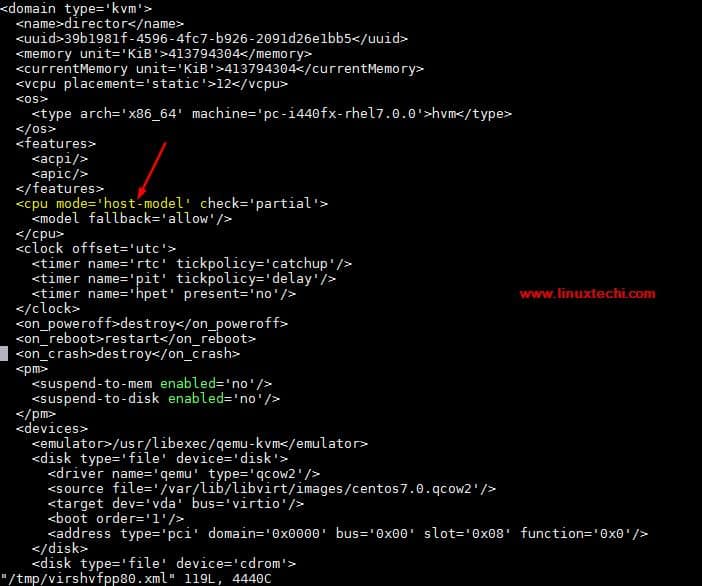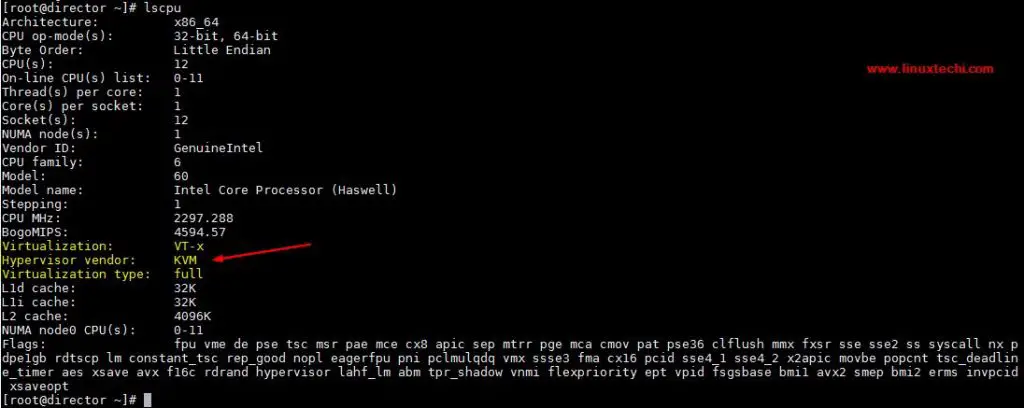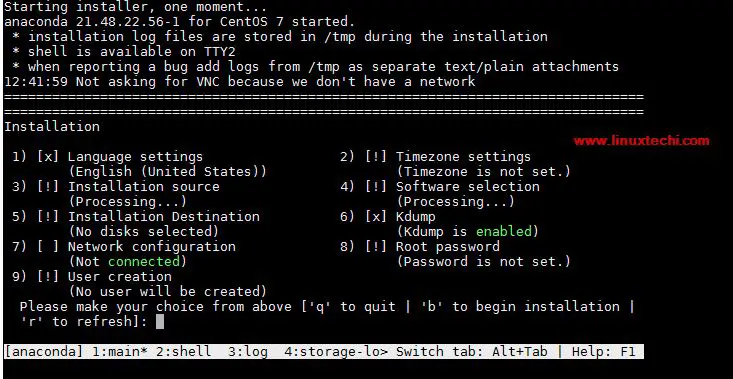https://www.linuxtechi.com/enable-nested-virtualization-kvm-centos-7-rhel-7
Nested virtualization means to configure
virtualization environment inside a virtual machine. In other words we
can say nested virtualization is a feature in the hypervisor which
allows us to install & run a virtual machine inside a virtual server
via hardware acceleration from the hypervisor (host).
In this article, we will discuss how to enable nested virtualization in KVM on CentOS 7 / RHEL 7. I am assuming you have already configured KVM hypervisor. In case you have not familiar on how to install and configure KVM hypervisor, then refer the following article
For Intel based Processors run the command,
Now to enable nested virtualization, create a file with the name “/etc/modprobe.d/kvm-nested.conf” with the following content.
Now remove ‘kvm_intel‘ module and then add the same module with modprobe command. Before removing the module, make sure VMs are shutdown otherwise we will get error message like “modprobe: FATAL: Module kvm_intel is in use”

Now login to the director VM and run lscpu and lsmod command

Let’s try creating a virtual machine either from virtual manager GUI or virt-install inside the director vm, in my case i am using virt-install command

This confirms that nested virtualization has been enabled successfully as we are able to create virtual machine inside a virtual machine.
In this article, we will discuss how to enable nested virtualization in KVM on CentOS 7 / RHEL 7. I am assuming you have already configured KVM hypervisor. In case you have not familiar on how to install and configure KVM hypervisor, then refer the following article
Install KVM Hypervisor on CentOS 7.x and RHEL 7.x
Let’s jump into the hypervisor and verify whether nested virtualization is enabled or not on your KVM host[root@kvm-hypervisor ~]# cat /sys/module/kvm_intel/parameters/nested N [root@kvm-hypervisor ~]#For AMD based Processors run the command,
[root@kvm-hypervisor ~]# cat /sys/module/kvm_amd/parameters/nested N [root@kvm-hypervisor ~]#In the above command output ‘N’ indicates that Nested virtualization is disabled. If we get the output as ‘Y’ then it indicates that nested virtualization is enabled on your host.
Now to enable nested virtualization, create a file with the name “/etc/modprobe.d/kvm-nested.conf” with the following content.
[root@kvm-hypervisor ~]# vi /etc/modprobe.d/kvm-nested.conf options kvm-intel nested=1 options kvm-intel enable_shadow_vmcs=1 options kvm-intel enable_apicv=1 options kvm-intel ept=1Save & exit the file
Now remove ‘kvm_intel‘ module and then add the same module with modprobe command. Before removing the module, make sure VMs are shutdown otherwise we will get error message like “modprobe: FATAL: Module kvm_intel is in use”
[root@kvm-hypervisor ~]# modprobe -r kvm_intel [root@kvm-hypervisor ~]# modprobe -a kvm_intel [root@kvm-hypervisor ~]#Now verify whether nested virtualization feature enabled or not.
[root@kvm-hypervisor ~]# cat /sys/module/kvm_intel/parameters/nested Y [root@kvm-hypervisor ~]#
Test Nested Virtualization
Let’s suppose we have a VM with name “director” on KVM hypervisor on which I have enabled nested virtualization. Before testing, make sure CPU mode for the VM is either as “host-model” or “host-passthrough” , to check cpu mode of a virtual machine use either Virt-Manager GUI or virsh edit command
Now login to the director VM and run lscpu and lsmod command
[root@kvm-hypervisor ~]# ssh 192.168.126.1 -l root root@192.168.126.1's password: Last login: Sun Dec 10 07:05:59 2017 from 192.168.126.254 [root@director ~]# lsmod | grep kvm kvm_intel 170200 0 kvm 566604 1 kvm_intel irqbypass 13503 1 kvm [root@director ~]# [root@director ~]# lscpu

Let’s try creating a virtual machine either from virtual manager GUI or virt-install inside the director vm, in my case i am using virt-install command
[root@director ~]# virt-install -n Nested-VM --description "Test Nested VM" --os-type=Linux --os-variant=rhel7 --ram=2048 --vcpus=2 --disk path=/var/lib/libvirt/images/nestedvm.img,bus=virtio,size=10 --graphics none --location /var/lib/libvirt/images/CentOS-7-x86_64-DVD-1511.iso --extra-args console=ttyS0 Starting install... Retrieving file .treeinfo... | 1.1 kB 00:00:00 Retrieving file vmlinuz... | 4.9 MB 00:00:00 Retrieving file initrd.img... | 37 MB 00:00:00 Allocating 'nestedvm.img' | 10 GB 00:00:00 Connected to domain Nested-VM Escape character is ^] [ 0.000000] Initializing cgroup subsys cpuset [ 0.000000] Initializing cgroup subsys cpu [ 0.000000] Initializing cgroup subsys cpuacct [ 0.000000] Linux version 3.10.0-327.el7.x86_64 (builder@kbuilder.dev.centos.org) (gcc version 4.8.3 20140911 (Red Hat 4.8.3-9) (GCC) ) #1 SMP Thu Nov 19 22:10:57 UTC 2015 ………………………………………………

This confirms that nested virtualization has been enabled successfully as we are able to create virtual machine inside a virtual machine.

No comments:
Post a Comment